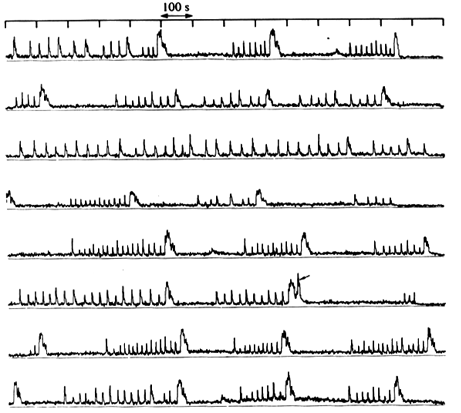Light curve of the Rapid BursterThese eight orbits of SAS-3 observations of the Rapid Burster shows its extraordinary bursting behavior that is classified as type II, together with a single special burst that is in fact an ordinary type I burst (i.e. a thermonuclear event). Note how the smallest bursts are very close together, whereas a big one is always followed by a long gap. (Each panel covers 24 minutes.) Diagram by Walter Lewin, MIT. Reproduced from Charles and Seward, Figure 8-17, Pg. 206.
IMAGES |
By Mission |
Stars |
HEASARC Home | Observatories | Archive | Calibration | Software | Tools | Students/Teachers/Public Last modified: Thursday, 26-Jun-2003 13:48:45 EDT HEASARC Staff Scientist Position - Applications are now being accepted for a Staff Scientist with significant experience and interest in the technical aspects of astrophysics research, to work in the High Energy Astrophysics Science Archive Research Center (HEASARC) at NASA Goddard Space Flight Center (GSFC) in Greenbelt, MD. Refer to the AAS Job register for full details. |


